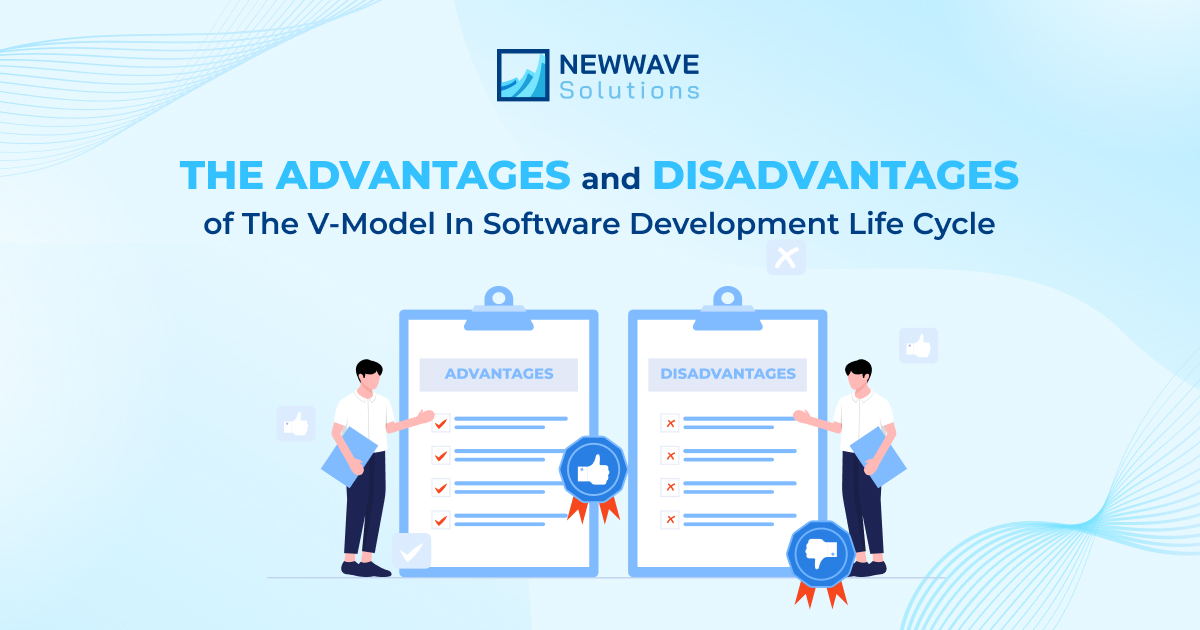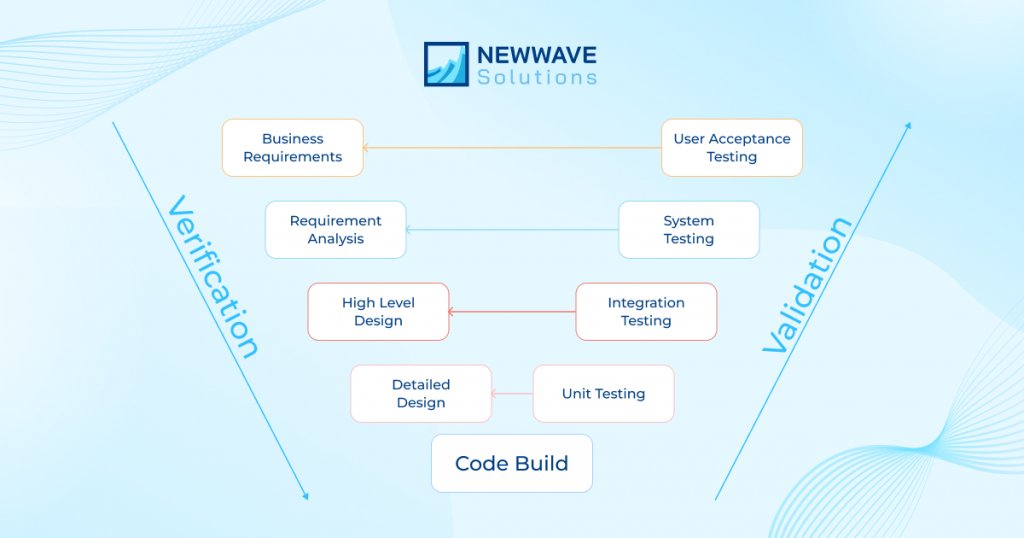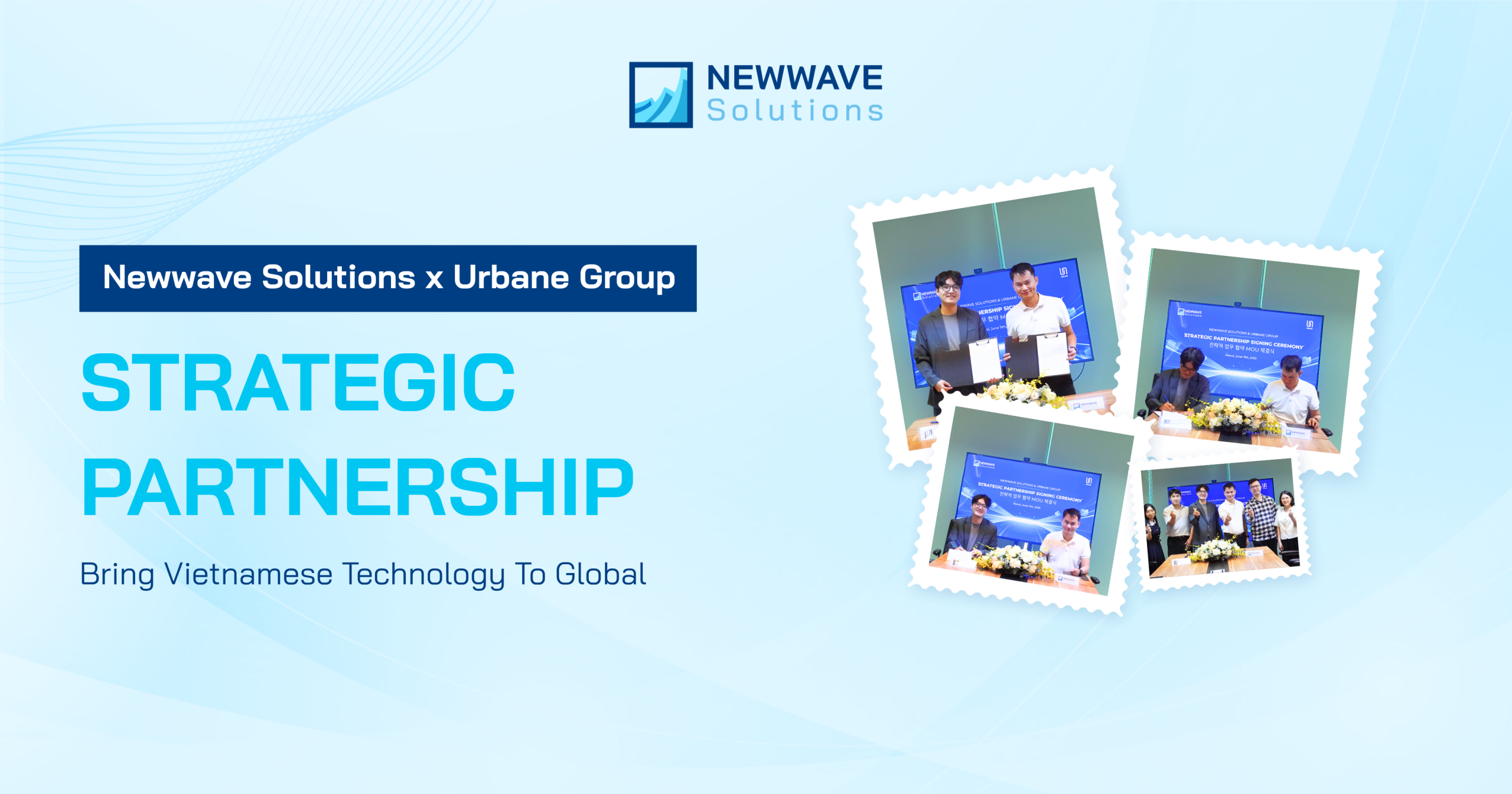

The Advantages and Disadvantages of the V-Model in Software Development Life Cycle

V-model in software development life cycle is a simple variant of the traditional waterfall software development model, often used for developing large projects and follows a sequential path of execution of processes.
Your choice of software development life cycle gives you flexibility at your convenience. There are numerous approaches that ensure smooth operation, and overcome specific challenges yet still comply with software development life cycle phases which originate as “software development life cycle models”. One of the most popular approaches is the V model which is suitable for large and complex projects. In this guide, Newwave Solutions will cover all the basic knowledge of the V-model in software development life cycle, including its process, advantages, and disadvantages. Now, let’s dive right in!
Table Of Contents
Toggle1. What is Software Development Life Cycle?
As a developer designs software from scratch, there are some specific essential steps that they must follow including planning, designing, implementation, testing, etc. which is called the software development life cycle. Generally, the software development life cycle process comprises six steps: Planning – Analysis – Design – Implementation – Testing & Integration – Maintenance.
While developers can implement functions at each stage in multiple ways, the basic process phases remain the same with the common goal being to help engineers effectively create high-quality software. Technically, choosing the suitable software development life cycle model requires a thorough consideration of dependent factors like the level of expertise required, business requirements, timeline, and budget.
If the phases and steps of the software development life cycle are followed properly, all aspects that need to be covered for the creation of customer-centric software are ensured and the outcome is guaranteed to be exceptional. The documentation done in the software development life cycle provides a proper guideline to developers on what they have to create and what is the requirement of the customer. It helps improve cost and time efficiency, enhances coordination between a team through defining proper roles for employees, improves transparency in the workplace, as well as minimizes risk potential when the project is deployed.
2. The V-Model in Software Development Life Cycle
The V-model is a type of software development life cycle model where the process executes in a V-shape sequential manner, of which, each stage has a corresponding test run. It is also known as the Verification and Validation model as the next phase starts only after the completion of the previous phase. The V-model is among the most expensive and time-consuming models yet provides excellent quality control, through early detection of errors in code and architecture. Similar to the traditional Waterfall model, all requirements are pre-set at the beginning and cannot be changed.

Verification phases – the process of evaluation of the product development phase using static analysis technique to find whether specified requirements meet and Validation phases – the process to evaluate the software after the completion of the development phase to determine whether the software meets the customer expectations and requirements using dynamic analysis technique. They are joined by a coding phase in V-shape.
The design phases comprise system design – complete hardware and communication setup, Architecture design – data transfer and communication between the internal modules and external environments, and module design follows the analysis of pre-set requirements and contains detailed communication with the customer to understand their requirements and expectation
The testing phases comprise Unit Testing – to eliminate bugs at the code or unit level; Integration testing – verifies the communication of modules among themselves; System Testing – ensure the complete application with its functionality, interdependency, and communication; User Acceptance Testing – to verify that the delivered system meets user’s requirement and the system is ready for use in the real world.
Principles of V-Model testing are based on a hierarchical perspective, Data/Process Integrity which must be identified at each requirement, cross-referencing the correlation between requirements and corresponding testing activity, and documentation – to maintain the application once it deploys.
3. Advantages and Disadvantages of V-Model in Software Development Life Cycle
The implementation of V-Model often requires abundant technical resources. Although, it brings a lot of advantages. V Model is highly disciplined in which phases are implemented one by one, it is simple to learn, use and manage the progress of the project accurately. The verification and validation activities early in the life cycle would enhance the probability of building an error-free and good quality product because engineers fix bugs and other system errors and build the software in less time than the available time frame. The V-model is rather user-friendly, straightforward, and provides a solid base for software development for small-scale developers.
As the trial activities such as designing, planning, and development take place before coding the software, it saves a lot of time for a busy team but still ensures the success rates of the project. The V-Model design framework is highly sophisticated and hence has no loopholes, unidirectional or downward data flow during the software development process.
There are also certain disadvantages of the V-Model, including high risk and uncertainty, not being fit for complex and object-oriented projects, unable to handle concurrent events, and does not support iteration of phases and projects with unclear requirements at the beginning. Besides, the V Model is rigid in the case of utilization and execution compared to other design environments or models. It also lacks flexibility in terms of design and takes time for new developers to get used to it.
Although the architecture is easy to follow, it does not support highly complex calculations in object-oriented projects. The V-Model does not produce initial prototypes of the software during the implementation phase which makes it unsuitable for use to develop complicated or professional software that requires a precise, solid, and sound execution design. Lastly, the mass updating features is the worst drawback which increases risks, especially in case errors appear midway through the software development process.
4. Final Thoughts
We hope that this guide has covered all the crucial aspects related to the V-Model in Software Development Life Cycle model to help you develop a quality software product in the minimum period. The main benefits of the V-Model in Software Development Life Cycle are its standard features and risk-free procedure. But before making the final decision, make sure to thoroughly analyze all relevant factors.
Newwave Solutions has implemented various projects following the V-Model in Software Development Life Cycle which gives us the expertise to guarantee a successful project for you. Contact us now to create mind-blowing software.
To Quang Duy is the CEO of Newwave Solutions, a leading Vietnamese software company. He is recognized as a standout technology consultant. Connect with him on LinkedIn and Twitter.
Popular News
Related News
-

-
 Managing Offshore Teams: Best Practices for SuccessFebruary 5, 2025 View more
Managing Offshore Teams: Best Practices for SuccessFebruary 5, 2025 View more -
 Top 10 Best Offshore Software Development Countries in 2025January 27, 2025 View more
Top 10 Best Offshore Software Development Countries in 2025January 27, 2025 View more












